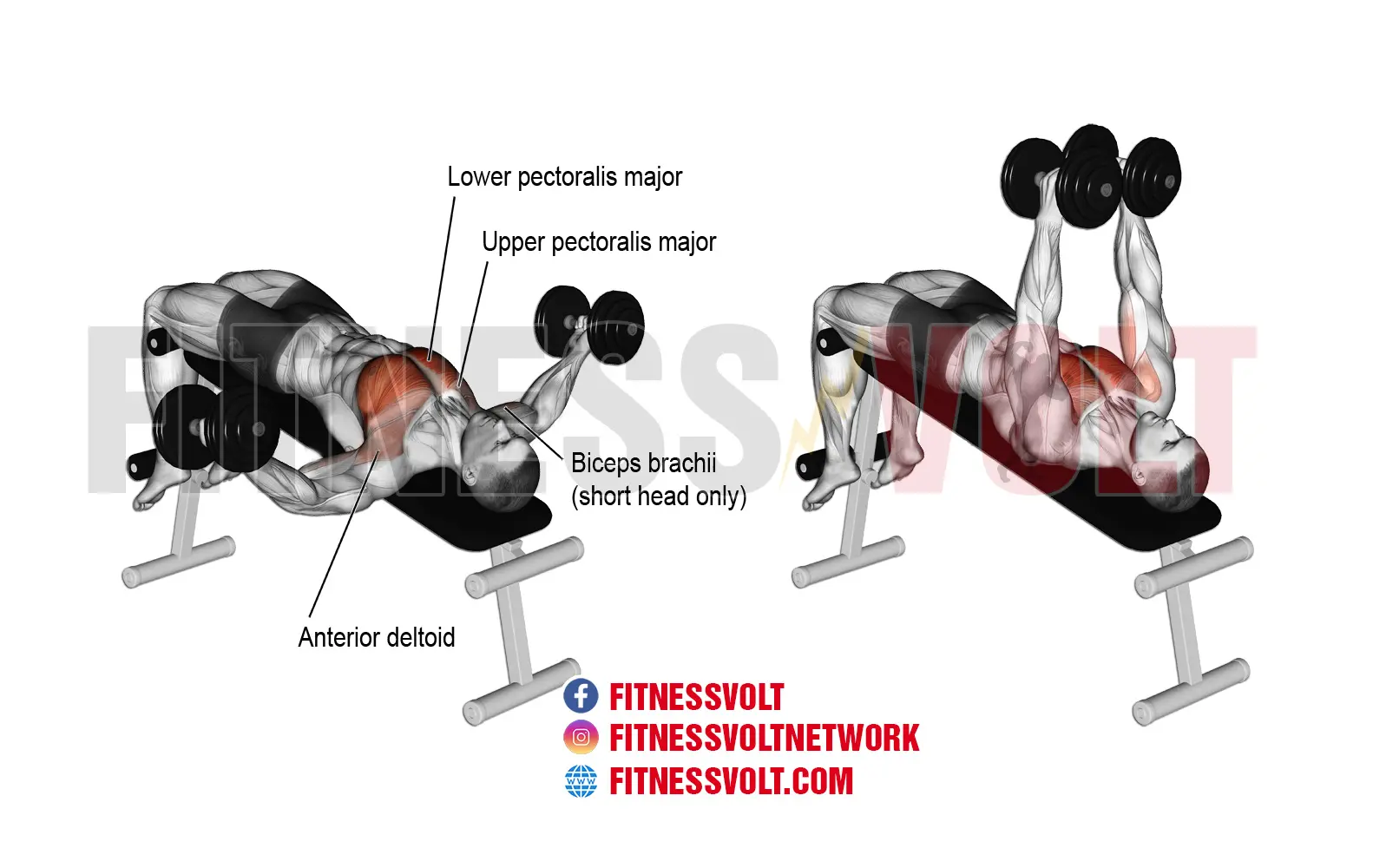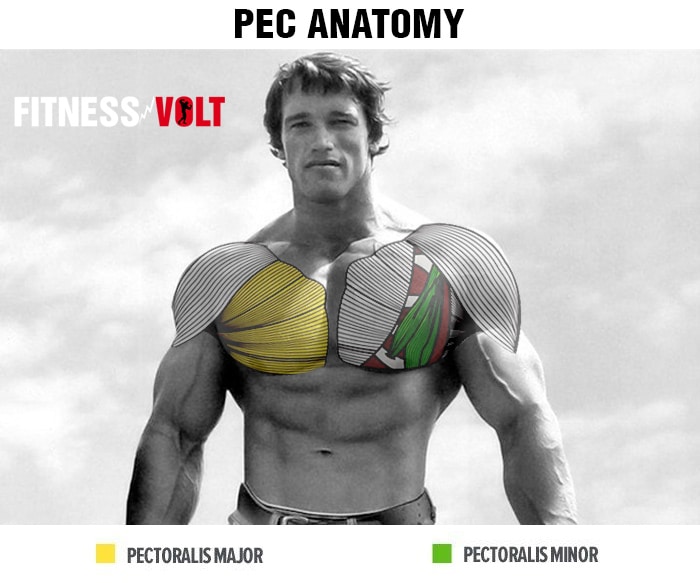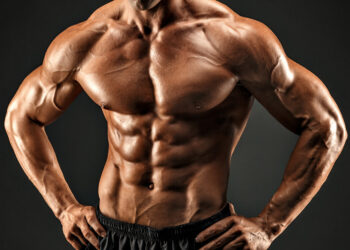Most lifters’ go-to chest exercise is the barbell bench press. While this classic exercise is excellent for building muscle and strength, it does little for your lower pecs.
If you want to develop more than brute strength and sculpt an aesthetically pleasing chest, you must hit your pecs with more than set after set of barbell bench presses.
As a veteran personal trainer with over 35 years of hands-on experience, I can attest that most people have an underdeveloped lower chest. This can be a big blow to overall aesthetics, as the lower chest creates the separation between the pecs and the abs.
I’ve helped countless people improve their midline aesthetics by focusing on the lower chest. In this article, I reveal the seven best exercises for sculpting this vital part of the chest.
Recent Updates: On July 20, 2024, Fitness Volt’s Content Strategist Tom Miller (CSCS) and Senior Editor Vidur Saini (American Council on Exercise-CPT) updated the article and added actionable expert tips throughout the piece to improve the reader experience. Level Up Your Fitness: Join our 💪 strong community in Fitness Volt Newsletter. Get daily inspiration, expert-backed workouts, nutrition tips, the latest in strength sports, and the support you need to reach your goals. Subscribe for free!
7 Best Lower Pec Exercises
To build the best lower chest, make sure you include at least a couple of these exercises in your training. If your lower pecs need more attention, consider adding a lower pec day to your current workout split.
- Decline Dumbbell Bench Press
- Parallel Bar Dips
- High To Low Cable Crossovers
- Decline Barbell Bench Press
- Decline Dumbbell Flyes
- Dumbbell Pullovers
- Push-Ups
1. Decline Dumbbell Bench Press
| Sets & Reps | 3-4 x 8-12 |
| Equipment Needed | Decline bench, dumbbells |
| Target Muscles | Lower pectoralis major (sternal head), triceps brachii |
If we had to choose just one exercise for our best lower chest workout, this would probably be it. Using dumbbells means you can get a really good stretch, and that makes this exercise extra effective.
“The decline dumbbell bench press is an excellent option for lifters who want to emphasize their lower chest without putting excessive strain on their shoulders,” explains Saini.
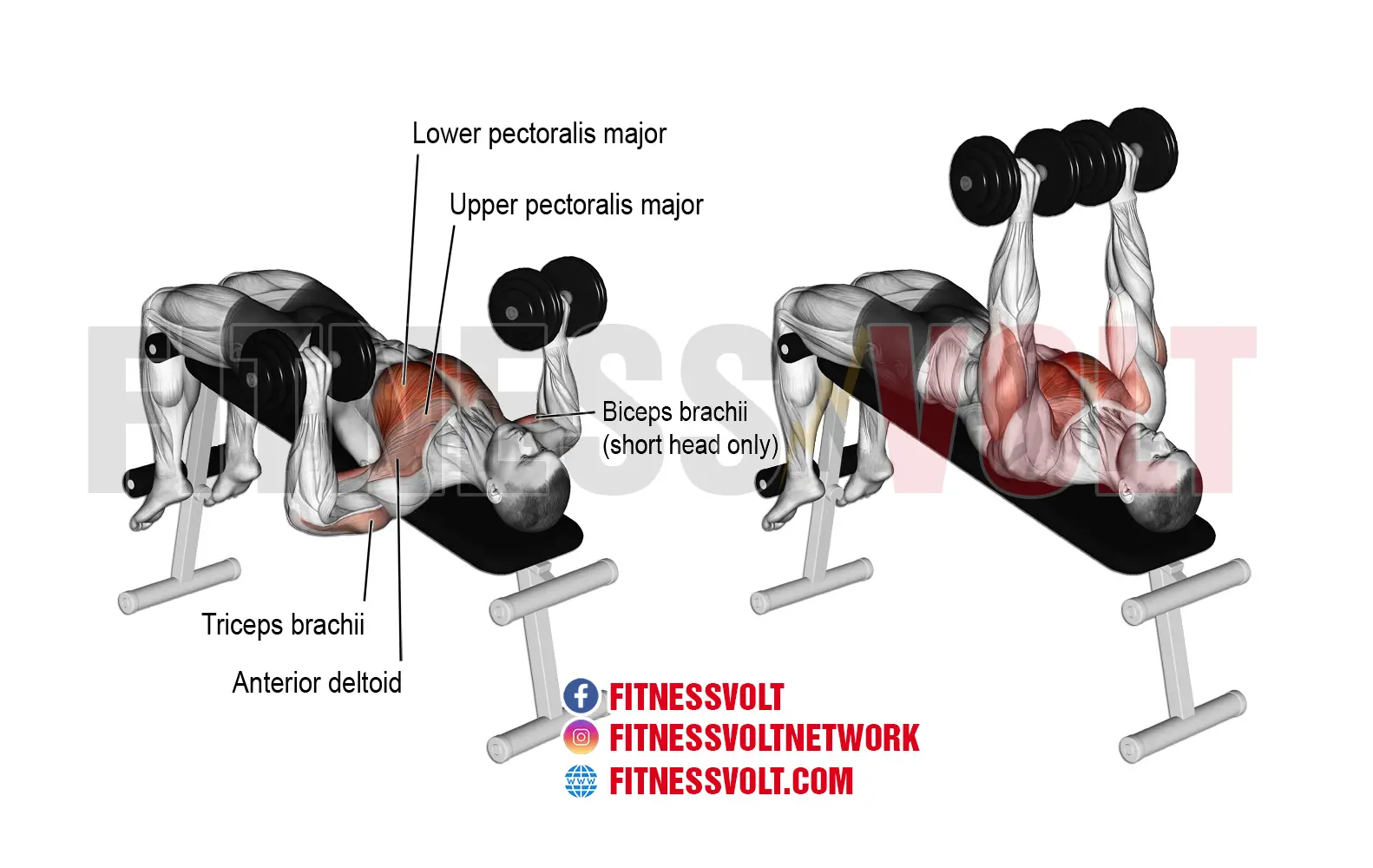
According to studies, the best bench angle for targeting the lower pecs is a decline of 15 degrees (1).
How to do it:
- Set the angle on an adjustable bench to 15 degrees. With a dumbbell in each hand, lie on the bench with your head lower than your hips. Brace your legs to stop yourself from sliding off the bench.
- Lift the weights and hold them over your shoulders. Turn your wrists, so your palms are facing away from you. Pull your shoulders down and back to stabilize and protect your shoulder joints.
- Bend your arms and lower the weights out and down to the outside of your chest. Keep your wrists straight and your elbows directly below your hands. Lower the weights as far as your flexibility and joint health allow.
- Press the weights back up, stopping just short of locking out your elbows.
- Lower the weights and repeat for the prescribed number of reps.
Pro Tip: As you press the dumbbells up, visualize pushing yourself toward the floor rather than simply lifting the weights. This subtle shift in focus can help you engage your lower chest more effectively and enhance the mind-muscle connection.
Benefits:
- Suitable for building strength and muscle size
- Can help increase shoulder mobility and flexibility
- Can be done reasonably safely without a spotter
- Allows you to work both sides equally
- Can be used to identify and fix left-to-right strength imbalances
| Difficulty | Intermediate |
| Progression | Steeper decline, barbell variation |
| Regression | Push-ups |
Read more about the decline dumbbell bench press
2. Parallel Bar Dips
| Sets & Reps | 3-4 x As many reps as possible (AMRAP) |
| Equipment Needed | Parallel bars or dip station |
| Target Muscles | Lower pectoralis major, triceps brachii, anterior deltoids |
A lot of exercisers are very quick to dismiss bodyweight exercises as being ineffective or only suitable for beginners. That’s a shame because many bodyweight exercises are every bit as useful as exercises that require equipment. Dips are an especially good lower pec exercise.
Saini suggests that dips are a functional powerhouse, targeting not just your lower chest but also your triceps and shoulders. They mimic real-world pushing movements and can significantly boost upper-body strength.
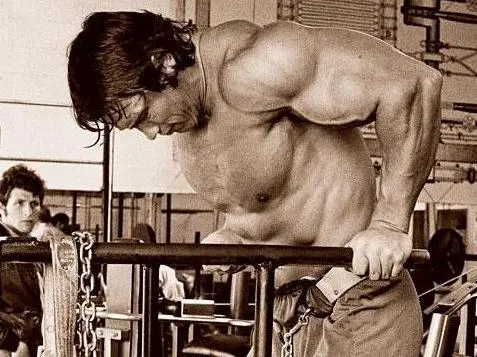
How to do it:
- Place your hands on the parallel dip bars so that they are about shoulder-width apart. Your knuckles should be facing outward. Step or jump up, so you are supporting your weight on your arms. Bend your legs and cross your ankles. Pull your shoulders down and back.
- Bend your arms and descend until your upper arms are about parallel to the floor.
- Push yourself back up and repeat.
Pro Tip: During the eccentric (lowering) phase, focus on actively controlling the descent. Avoid simply dropping down; instead, try to resist gravity as much as possible.
Benefits:
- A useful alternative to exercises that require weights or equipment
- An excellent triceps exercise
- This can be made harder by using a weighted dipping belt
- Can be done using two chair backs for home training
- A good way to measure relative strength, i.e., performance relative to bodyweight.
| Difficulty | Intermediate/Advanced |
| Progression | Add weight using a dip belt, increase time under tension (slow negatives) |
| Regression | Assisted dips (machine or band), bench dips |
3. High To Low Cable Crossovers
| Sets & Reps | 3-4 x 10-15 |
| Equipment Needed | Cable machine with high pulleys |
| Target Muscles | Lower pectoralis major (sternal head) |
While there is no such thing as an exercise that completely isolates your lower pecs, this one comes pretty close. Because you won’t be actively bending your elbows, your triceps only play a small role in this exercise, leaving you free to focus on pumping up your lower pecs.
Cable crossovers provide constant tension throughout the movement, leading to greater muscle fatigue and growth potential, highlights Saini.
How to do it:
- Attach a D-shaped handle to the cables of a crossover machine. Take a handle in each hand and stand between the pulleys. Step forward and into a split stance for balance. Lean forward about 30 degrees at your hips and brace your abs. Your arms should be straight but not completely locked. Keep them rigid.
- Without bending your arms, draw your arms forward and down so that they meet in front of your hips. Pause and squeeze your pecs as hard as you can.
- Slowly raise your arms up and to the sides to stretch your pecs.
- Repeat for the prescribed number of repetitions.
Pro Tip: To intensify the contraction, slightly lean forward and squeeze your chest muscles with each rep.
Benefits:
- Train your lower pecs without much triceps involvement
- A good exercise for pre or post-exhaust training
- Much easier on your elbows, wrists, and shoulders than most heavy-pressing exercises
| Difficulty | Beginner/Intermediate |
| Progression | Single-arm variation, kneeling cable crossovers |
| Regression | Pec deck machine, dumbbell flyes (decline or flat) |
4. Decline Barbell Bench Press
| Sets & Reps | 3-4 x 6-10 |
| Equipment Needed | Decline bench, barbell |
| Target Muscles | Lower pectoralis major (sternal head), triceps brachii |
Most gyms have a dedicated decline bench press station. They usually have built-in leg pads to stop you from sliding off the bench, and that makes lifting heavy weights safer. Many have weight catchers so you can train to mechanical failure in safety. Make this exercise safer still by training with a spotter.
Saini adds that the decline barbell bench press allows for heavier loads than dumbbells, making it a great option for increasing strength and power.
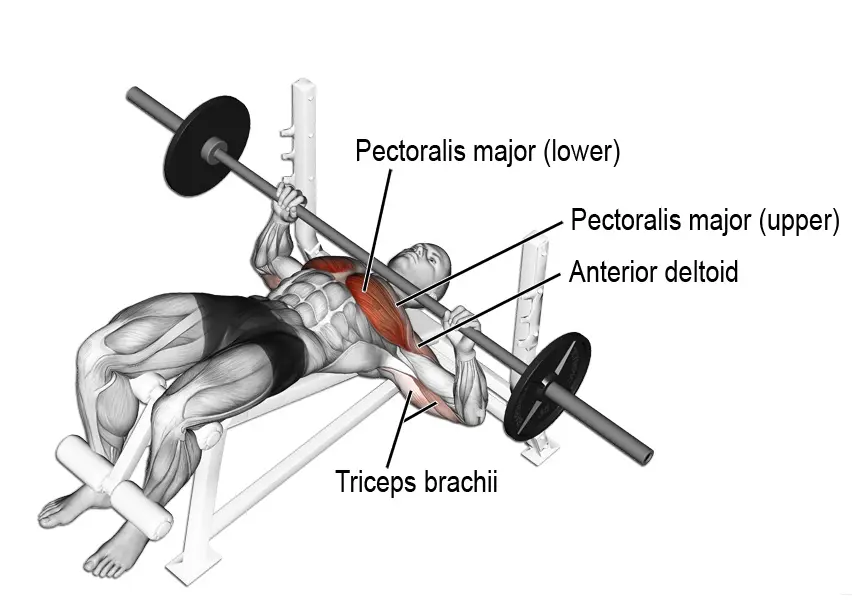
How to do it:
- Lie on the bench with your head lower than your hips. Reach up and grab the barbell with an overhand grip slightly wider than shoulder-width. Pull your shoulders down and back to stabilize and protect your joints. Unrack the bar and hold it over your chest.
- Bend your arms and lower the bar down to your sternum. Descend smoothly and under control, and do not bounce the bar off your chest.
- Press the weight back up and repeat.
- You can also do this exercise using a Smith machine and an adjustable bench.
Pro Tip: Experiment with a “touch-and-go” technique where you gently touch the bar to your chest before immediately pressing it back up. This can help maintain muscle tension throughout the set, leading to greater metabolic stress and growth potential.
Benefits:
- Allows you to lift heavier weights
- Less balance is required than for dumbbell bench presses
- Great for building muscle size and strength
- Less chance of sliding off the bench than with dumbbells and a standard adjustable bench
| Difficulty | Intermediate/Advanced |
| Progression | Pause reps, close-grip decline bench press |
| Regression | Decline dumbbell bench press, decline Smith machine bench press |
5. Decline Dumbbell Flyes
| Sets & Reps | 3-4 x 10-15 |
| Equipment Needed | Decline bench, dumbbells |
| Target Muscles | Lower pectoralis major (sternal head) |
High-to-low cable flyes are a great way to work your lower pecs, but not all gyms have the necessary equipment, and if you train at home, you may not have space for a cable crossover machine. The good news is you can work your lower pecs with nothing more than your trusty adjustable bench and a pair of dumbbells.
Saini recommends decline dumbbell flyes as they are an isolation exercise that effectively stretches the lower chest fibers at the bottom of the movement, leading to greater pump and muscle activation.
Level Up Your Fitness: Join our 💪 strong community in Fitness Volt Newsletter. Get daily inspiration, expert-backed workouts, nutrition tips, the latest in strength sports, and the support you need to reach your goals. Subscribe for free!
How to do it:
- Set the angle on an adjustable bench to 15 degrees. With a dumbbell in each hand, lie on the bench with your head lower than your hips. Brace your legs to stop yourself from sliding off the bench.
- Lift the weights and hold them over your shoulders. Turn your wrists, so your hands are facing inward. Pull your shoulders down and back to stabilize and protect your shoulder joints. Bend your arms slightly, and then keep them rigid.
- Open your arms and lower the weights out and down to your sides. Your upper arms should be perpendicular to your body.
- Get a good stretch and then lift the weights and bring them together over your chest.
- That’s one rep – keep going!
Pro Tip: At the bottom of the movement, when your arms are extended, and you feel a deep stretch in your chest, pause for a brief moment before initiating the concentric (lifting) phase.
Benefits:
- Suitable for home exercisers
- A good way to identify and fix left-to-right imbalances
- You can adjust the range of motion to suit your flexibility and shoulder health
| Difficulty | Beginner/Intermediate |
| Progression | Cable crossovers |
| Regression | Pec deck machine |
Read more about decline dumbbell flyes
6. Dumbbell Pullovers
| Sets & Reps | 3 x 10-15 |
| Equipment Needed | Decline bench, dumbbell |
| Target Muscles | Lower pectoralis major (sternal head), latissimus dorsi, serratus anterior |
Dumbbell pullovers are often thought of as a back exercise, and while they do involve the lats, they also work your lower pecs. If you train your chest and back together in the same workout, this exercise is a great way to link body parts and transition from chest training to working your back.
“Pullovers on a decline bench primarily target the lower chest, offering a unique stretch and contraction not found in many other exercises,” Saini says.
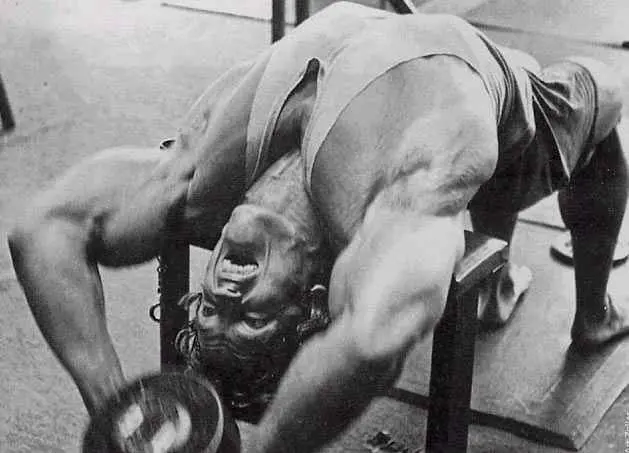
How to do it:
- Holding a single dumbbell, lie on your back along a flat bench. Hold the weight over your chest with your palms against the inside of the plates. Your arms should be slightly bent but then held rigid.
- Lower the weight down behind your head until your biceps are next to your ears.
- Pull the weight up and back over your chest.
- Make this exercise a little more productive by setting your bench to a 10 to 15-degree decline.
Pro Tip: As you lower the dumbbell behind your head, focus on keeping your core engaged, and ribs pulled down for a deeper stretch.
Benefits:
- Minimal triceps involvement
- A good exercise for pre or post-exhaust training
- A useful shoulder mobility exercise
- Provides the lats with a good stretch
| Difficulty | Intermediate |
| Progression | Use an EZ-curl bar |
| Regression | Straight-arm lat pulldown |
7. Push-Ups
| Sets & Reps | 3 x AMRAP |
| Equipment Needed | Elevated surface for feet (e.g., bench, box) |
| Target Muscles | Lower pectoralis major, triceps brachii, anterior deltoids |
If you look closely at the angle of your body during push-ups, you’ll notice that it is very similar to decline bench presses. That means the humble push-up is an effective bodyweight lower pec exercise. Place your hands on a bench or blocks to increase the angle.
Saini suggests that push-ups are an accessible yet challenging bodyweight exercise that emphasizes the lower chest. Elevating your feet increases the resistance and demand on your lower pecs.

How to do it:
- Squat down and place your hands on the floor, a little over shoulder-width apart. Walk your feet back, so your shoulders, hips, and feet form a straight line. Brace your abs and pull your shoulders back and down.
- Bend your arms and lower your chest down to within an inch of the floor. Do not let your hips drop out of alignment.
- Extend your arms and repeat.
- Bend your legs and place your knees on the floor to make this exercise easier.
Pro Tip: Try performing archer push-ups to increase the difficulty and further target the lower chest.
Benefits:
- You can do push-ups almost anywhere and anytime
- Easy on your shoulders
- An excellent way to finish your gym-based lower chest exercise
| Difficulty | Intermediate |
| Progression | Elevate feet higher, perform on an unstable surface (e.g., stability ball), weighted vest push-ups |
| Regression | Standard push-ups, incline push-ups, knee push-ups |
Read also,13 Push-Up Variations For Mass, Strength, and Performance
Best Lower Chest Workout
Perform this workout once weekly to turn this lagging muscle group into a strength:
| Exercise | Sets | Reps | Rest |
| Decline Dumbbell Bench Press | 3-4 | 8-12 | 60-90 sec |
| Parallel Bar Dips | 3-4 | AMRAP | 90-120 sec |
| High to Low Cable Crossovers | 3 | 10-15 | 60 sec |
| Decline Dumbbell Flyes | 3 | 10-15 | 60 sec |
| Push-Ups (Decline Variation) | 3 | AMRAP | 60 sec |
Training Tips For Lower Chest
Get more from your lower chest workouts with these handy, practical tips.
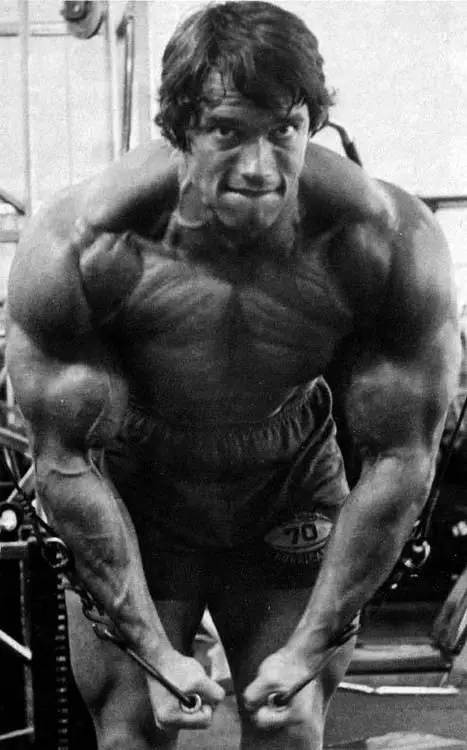
Start your workout with a lower chest exercise
If building your lower chest is a training priority, start your workout with a lower chest exercise. That way, your energy levels will be highest, and you’ll be able to put more effort into your chosen lower pec exercise.
Use compound and isolation exercises
Many trainers recommend doing nothing but compound exercises. While that’s good advice for building strength, isolation exercises can help build muscle size, too. Do at least 1-2 isolation exercises in your lower pec workout to ensure that you provide this muscle group with the variety it needs to grow.
Use intensifying techniques
Make your lower pec workouts even more effective by using intensifying methods like drop sets, supersets, cheat reps, forced reps, and pre and post-exhaust. While these methods are hard, they’re just what you need to trigger fresh muscle growth and get you out of a training rut.
Change exercises from time to time
Even the best lower pec workout will stop working after a month or two. Keep your workouts fresh and productive by changing exercises from time to time and trying different rep ranges. Changing your workout from time to time will help keep your muscles growing.
Take care of your shoulders
Decline chest exercises can be hard on your shoulders, especially if you descend too deep and overstretch your joints. Choose the most shoulder-friendly lower pec exercises you can find, and never use a range of motion or exercise that causes joint pain.
Train your lower chest after a rest day
If you are fresh and well-rested, you’ll be able to do more reps, lift more weight, and produce greater muscle growth. Rearrange your training split, so you always train your lower pecs after a day off.
Pec Anatomy
While you don’t need a degree in anatomy or kinesiology to build a great chest, knowing a little more about the location and function of the muscles you want to train is always helpful. If nothing else, it will help you select the best lower chest workout exercises.
The pec major is the large, fan-shaped muscle located on the front of your torso. It is comprised of two different heads or sub-sections:
- The clavicular (or upper) head
- The sternal (or lower) head. The lower/sternal head is also known as the abdominal head.
The clavicular head is responsible for three major movements:
- Shoulder flexion: Lifting your arm up, like you would to reach overhead
- Horizontal adduction: Pulling your arm across your body, as you would in a dumbbell fly
- Internal/medial rotation: Rotation of the shoulder toward the midline of the body
Whereas, the sternal head has the following functions:
- Shoulder extension: Pulling your arm down from an overhead position, as you would in a pullover
- Horizontal adduction: Pulling your arm across your body, as you would in a dumbbell fly
- Internal/medial rotation: Rotation of the shoulder toward the midline/front of the body
As you can see, both heads often work together and share some movements.
By altering your body’s position and selecting appropriate exercises, you can emphasize the lower pecs. However, it is not possible to isolate them entirely because the lower and upper pecs always work together, often alongside the deltoids or shoulder muscles.
So, what are the best exercises for targeting your lower pecs? Keep reading to find out!
Read also:
- Best Upper Chest Exercises
- Best Chest Exercises For Building Bigger Pecs
- Old-School Chest Workout
- Old-School Exercises to Build Your Chest
Wrapping Up
Even with the best lower chest workout, building the sternal part of your pecs won’t be easy. It’ll take time, effort, energy, and sweat. But, in terms of appearance and function, you’ll be rewarded. Show your lower pecs some love by building your workouts around these proven exercises. In just a few months, you’ll have lower pecs to be proud of!
References
- PubMed: Influence of Bench Angle on Upper Extremity Muscular Activation During Bench Press Exercise https://pubmed.ncbi.nlm.nih.gov/25799093/

